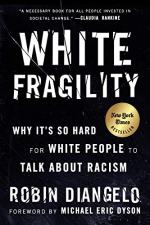
|
| Name: _________________________ | Period: ___________________ |
This test consists of 15 multiple choice questions and 5 short answer questions.
Multiple Choice Questions
1. What is race?
(a) A biological result.
(b) Only significant in America.
(c) A social construct.
(d) Not significant in America.
2. What does Diangelo think about treating everyone the same, regardless of race?
(a) She says it is impossible to teach someone to treat everyone the same.
(b) She says only certain people can be taught to treat everyone the same.
(c) She says it is possible to teach someone to treat everyone the same.
(d) She says only people of color can treat everyone the same.
3. What does Robin Diangelo do for a living?
(a) She holds workshops on race and racism.
(b) She is a dentist.
(c) She is an actor.
(d) She is a gardener.
4. Who does Diangelo believe causes the most damage to people of color?
(a) Mixed race people.
(b) White progressives.
(c) People of color.
(d) White conversatives.
5. What is one claim Diangelo hears from white people often?
(a) "Racism is not real."
(b) "I don't see color."
(c) "I don't need to understand racism."
(d) "I hate people of color."
6. Who did people (post civil rights movement) consider to be racist?
(a) Young whites in the north.
(b) Old, uneducated white Northerners.
(c) Old, uneducated Southern whites.
(d) Young whites in the south.
7. What does "white flight" refer to?
(a) When Amelia Earhart flew a plane over the Pacific Ocean.
(b) The phenomenon of white people moving into neighborhoods mostly occupie by people of color.
(c) White people trying to justify their own racism.
(d) The phenomenon of white families fleeing neighborhoods to escape to the suburbs and avoid the influx of people of color.
8. What was the name of Martin Luther King Jr.'s famous speech?
(a) I Was Thinking Last Night.
(b) I Have an Idea.
(c) I Had a Dream.
(d) I Had a Nightmare.
9. How does Diangelo define a white progressive?
(a) Any white person who does not see color.
(b) Any white person who thinks they are racist.
(c) Any white person who thinks they are not racist.
(d) Any white person who marched in the sixties.
10. As stated in Chapter 4, what do white people represent in Western society?
(a) They represent the experience of modern Americans.
(b) They represent old, antiquated ideas.
(c) They represent certain people's experience.
(d) They represent the universal human experience.
11. Who does race have a hand in shaping?
(a) Race does not shape people.
(b) Everyone.
(c) White people only.
(d) People of color only.
12. What is the general understanding of whiteness, as defined in Chapter 2?
(a) That it is unwanted.
(b) That it is desirable.
(c) That is is abnormal and not considered the standard.
(d) That it is normal and the standard for human.
13. Does Diangelo think racism has adapted over time?
(a) She does not mention time in relation to racism.
(b) Yes.
(c) She think it both has and has not.
(d) No.
14. What does racism need to be distinguished from in order to understand it, according to Diangelo?
(a) Prejudice and discrimination.
(b) Love and hate.
(c) Assumptions and bias.
(d) Good and evil.
15. What is color celebrate?
(a) It claims that everyone is different.
(b) It claims that the person sees and embraces racial difference.
(c) It claims that everyone should be proud of their race.
(d) It claims that the person sees but does not value racial difference.
Short Answer Questions
1. What does Diangelo say about the state of Western society?
2. What does Diangelo write that she does not have to worry about?
3. What does Diangelo say of race relations?
4. Where does white supremacy draw much of its power?
5. Why is the past considered an ideal time for whites, as stated in Chapter 4?
|
This section contains 663 words (approx. 3 pages at 300 words per page) |

|




